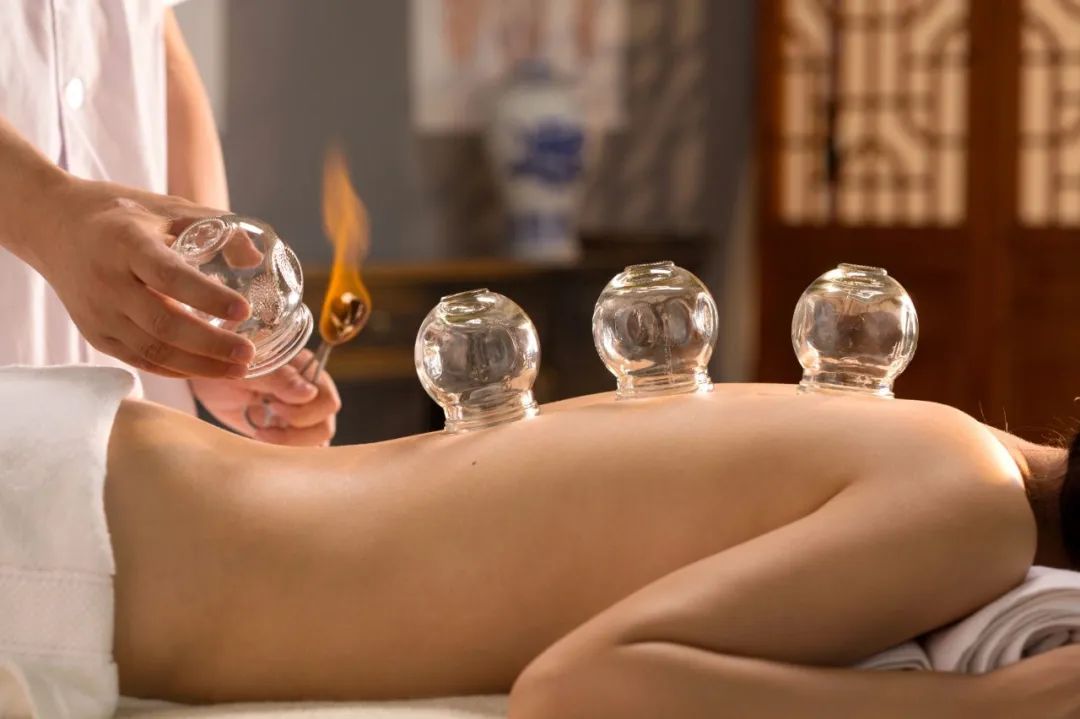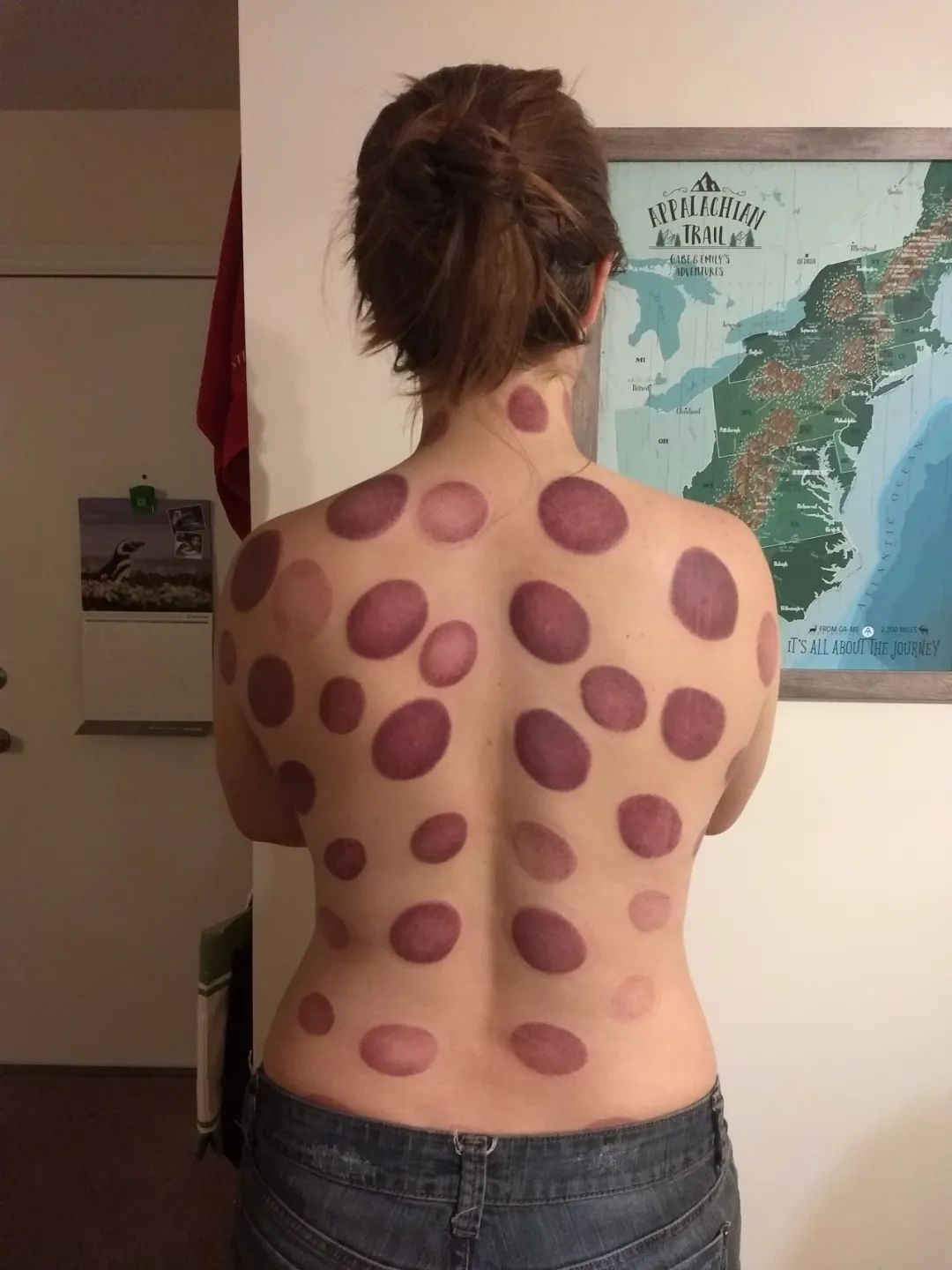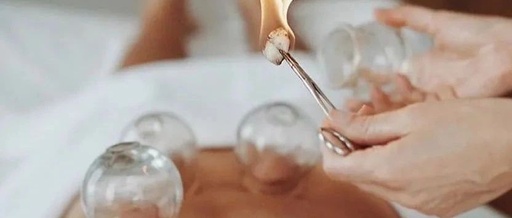Click the blue text

Follow us


Introduction to Cupping Therapy
Cupping therapy (commonly known as fire cupping) is a treatment method that uses cups as tools to create a vacuum by burning or squeezing out air, causing the cups to adhere to specific areas of the body (affected areas, acupuncture points). This generates extensive stimulation, resulting in local congestion or bruising, aimed at preventing and treating diseases and strengthening the body. Like acupuncture, cupping is a form of physical therapy and is considered one of the most effective methods within this category. It is an ancient folk medical practice suitable for children as well. It is also referred to as “cupping” and can involve fire cups or air cups.
Historical Records of Cupping Therapy
Fire cupping therapy is one of the treasures of traditional Chinese medicine, used for a long time in Chinese folk practices. The medical text “Zhouhou Beiji Fang” by the Jin dynasty physician Ge Hong contains records of the horn method, which involves using hollowed-out animal horns to treat abscesses. The Tang dynasty text “Wai Tai Mi Yao” by Wang Tao also introduced the use of bamboo tubes for cupping, stating: “Take a bamboo tube about three fingers wide and one and a half inches long, leaving one end with a node, and shave the other end thin like a sword. Boil this tube several times, and when hot, press it on the ink spot, and after a while, use a knife to break the area where the suction occurred. This will expel yellow, white, and red fluids, and sometimes pus or worms will come out. Repeat this until all harmful substances are expelled, and then the patient will feel light and clear-headed.”

Benefits of Cupping Therapy
1. Stimulating Effect
Cupping therapy creates a negative pressure by expelling air, allowing the rim of the cup to tightly adhere to the skin surface, pulling on nerves, muscles, blood vessels, and subcutaneous glands, which can trigger a series of neuroendocrine responses, regulating vascular dilation and contraction, and improving local blood circulation.
2. Negative Pressure Effect
The negative pressure from cupping causes rapid local congestion and bruising, with small capillaries potentially rupturing, leading to hemolysis. The release of hemoglobin from red blood cells provides a beneficial stimulus to the body, allowing for bidirectional regulation of organ functions through the nervous system, while also enhancing the phagocytic action of white blood cells, increasing the skin’s sensitivity and tolerance to external changes, thereby boosting the body’s immunity. Additionally, the strong suction power of the negative pressure can fully open sweat pores, stimulating the functions of sweat and sebaceous glands, leading to the shedding of aging skin cells and accelerating the expulsion of toxins and waste from the body.
3. Warming Effect
The warming effect of cupping not only dilates blood vessels and increases blood flow but also enhances the permeability of blood vessel walls and the phagocytic capacity of cells. Changes in vascular tension and mucosal permeability at the cupping site accelerate lymphatic circulation and strengthen phagocytosis, creating a favorable environment against infectious pathogens.
Methods and Precautions for Cupping Therapy
Flash Fire Method Key Points: Use tweezers to hold an alcohol cotton ball, ignite it, and circle it inside the cup before quickly removing it; then swiftly place the cup over the area to be treated, allowing it to adhere.
Precautions: (1) Do not burn the rim of the cup during cupping, as this can cause skin burns; do not leave the cup on for more than 20 minutes, as this can damage the skin. (2) Avoid cupping on areas with skin allergies, ulcers, edema, or over the heart, major blood vessels, and lower abdomen.

Identifying Effects
Dark purple and dull cupping marks: Generally indicate blood stasis in the body, such as poor menstrual flow, dysmenorrhea, or insufficient blood supply to the heart. Of course, if the affected area is significantly cold, dark purple marks may also appear.
Bright purple cupping marks with patches: Generally indicate cold congealing and blood stasis.
Scattered purple spots of varying depths: Generally suggest qi stagnation and blood stasis.
Light purple with blue patches: Generally indicate a deficiency syndrome.
Bright red and vivid cupping marks: Generally suggest yin deficiency or a combination of qi and yin deficiency. Yin deficiency with excess heat may also present this mark.
Bright red scattered spots: Usually appear after extensive cupping and do not protrude above the skin. If concentrated on a specific acupuncture point and its vicinity, it indicates the presence of pathogenic factors in the corresponding organ.
No cupping marks or marks that disappear immediately after removing the cup, returning to normal color: Generally indicate that the pathogenic factor is mild.
Gray-white cupping marks that feel cool to the touch: Generally indicate deficiency cold and dampness.
Cupping marks with surface patterns and slight itching: Indicate wind and dampness.
Water vapor inside the cup: Indicates dampness in that area.
Blisters appearing from cupping: Indicate heavy internal dampness; if the blisters contain blood, it reflects heat, dampness, and toxicity.
Blisters or excessive edema in the cupping area: Indicate qi deficiency.
Deep red, dark purple, or red rashes, or slight pain upon touch with body heat: Indicate heat toxicity; if there is no body heat, it suggests blood stasis.
No change in skin color, feeling cool to the touch: Indicates a deficiency syndrome.


All content in this article is original
All images are obtained through compensation
Theft is prohibited, and violators will be prosecuted

